So, e-bikes are the cool kids right now – quiet, fast, and smarter than most of us before our first cup of coffee. But let’s be honest: not everyone’s here for the digital drama. Batteries die, apps crash, and sometimes you just want to hop on and ride. No fuss. No firmware. Just you, the road, and a machine that doesn’t need a software update every other week.
That’s exactly why vintage bicycles are quietly rolling back into the spotlight. No screens. No nonsense. Just gears, steel, and soul.
And here’s something I’ve been seeing up close – some collectors, the ones who aren’t losing sleep over the so-called market crash, are out there quietly scooping up some seriously nice frames at prices that would’ve been laughable a few years ago.
You don’t hear much from them, though. Right now, the loudest voices tend to be the ones trying to liquidate, not the ones buying. And honestly? As a buyer myself, I’m not exactly eager to advertise that I’m in the market – especially if it means I’ll end up paying more.
And it’s not just the bikes. That same quiet buying spree? It extends to vintage components too – especially the ones in excellent shape or, better yet, NOS (new old stock). Those little gems, often priced by panic, are getting snapped up by folks who know exactly what they’re looking at.
The others I talk to regularly? They’re not panic-selling either. If anything, they’re doubling down. Holding onto their collections, adding to them even, thanks to the wave of sellers who are offloading in a hurry. It’s like a low-key treasure hunt for the patient and the passionate.
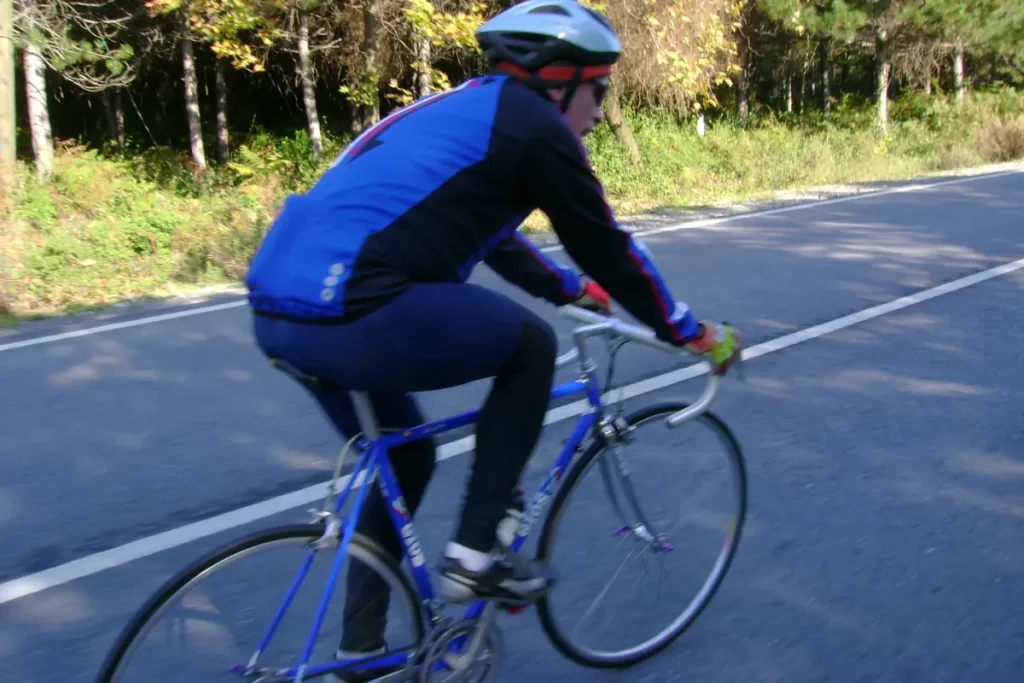
The Market Right Now: A Bit of a Dip, But Don’t Panic
If you got into vintage bikes thinking they’d fund your retirement – well, sorry to break it to you, but that 1983 Pro-Miyata probably isn’t your golden ticket. Most of us started collecting for the love of it, not the ROI. And honestly? That’s kind of the point.
Right now, prices are low. Like, surprisingly low. Why? A few reasons. First, there are just a lot of bikes out there. Years of collecting, restoring, and hoarding (let’s be real) have flooded the market. More bikes than buyers = lower prices.
Plus, many longtime collectors are aging out and selling off their stashes. Some of those bikes are absolute gems – but the influx is driving prices down even more.
And let’s not forget the post-COVID bike boom. Everyone and their neighbor bought a bike during lockdown. Now? We’ve got a surplus. Add in high interest rates and tighter wallets, and yeah – people aren’t exactly splurging on hobby bikes right now.
Why Gen Z Might Be the Ones to Bring It Back
Here’s where it gets interesting. Gen Z – the TikTokers, the thrift-store pros, the climate warriors – they might just be the ones to spark a vintage bike revival.
They’re into sustainability. They love stuff with character. And they’re kind of over the whole “everything must be digital” vibe. A vintage bike? It’s eco-friendly, full of personality, and gloriously analog. No notifications. No battery anxiety. Just ride.
And with cities leaning into the whole “15-minute city” idea, vintage bikes are actually practical again. They’re light, nimble, and perfect for zipping to the café, the market, or wherever your day takes you.
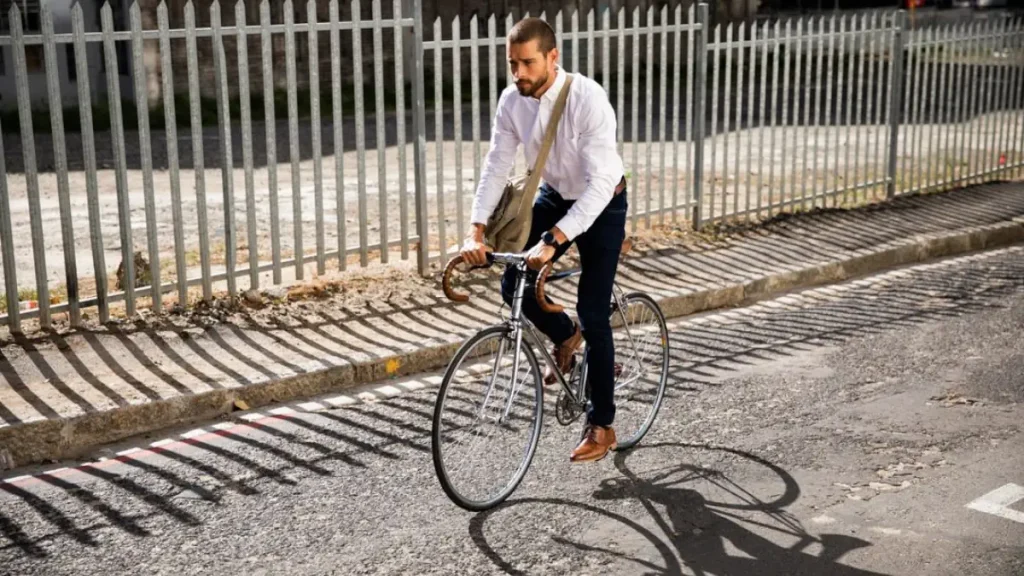
The Allure of Simplicity
At the heart of this revival is a craving for simplicity. Vintage bikes are mechanical poetry – no batteries, no firmware updates, just gears, chains, and wheels. They offer a raw, unfiltered connection between rider and road.
But it’s more than just mechanics. It’s a mindset. In a world that’s always rushing, always connected, these bikes invite you to slow down. To ride for the joy of it. To remember that not everything needs to be optimized or electrified.
Sustainability and Craftsmanship
Let’s talk green. Vintage bikes are the definition of sustainable. Built to last, easy to repair, and already made – so no new resources needed. Restoring one keeps it out of the landfill and gives it a second life.
And then there’s the craftsmanship. Many vintage bikes were made with serious attention to detail – lugged steel frames, leather saddles, polished chrome. They’re not just functional; they’re beautiful. Riding one is like rolling art.
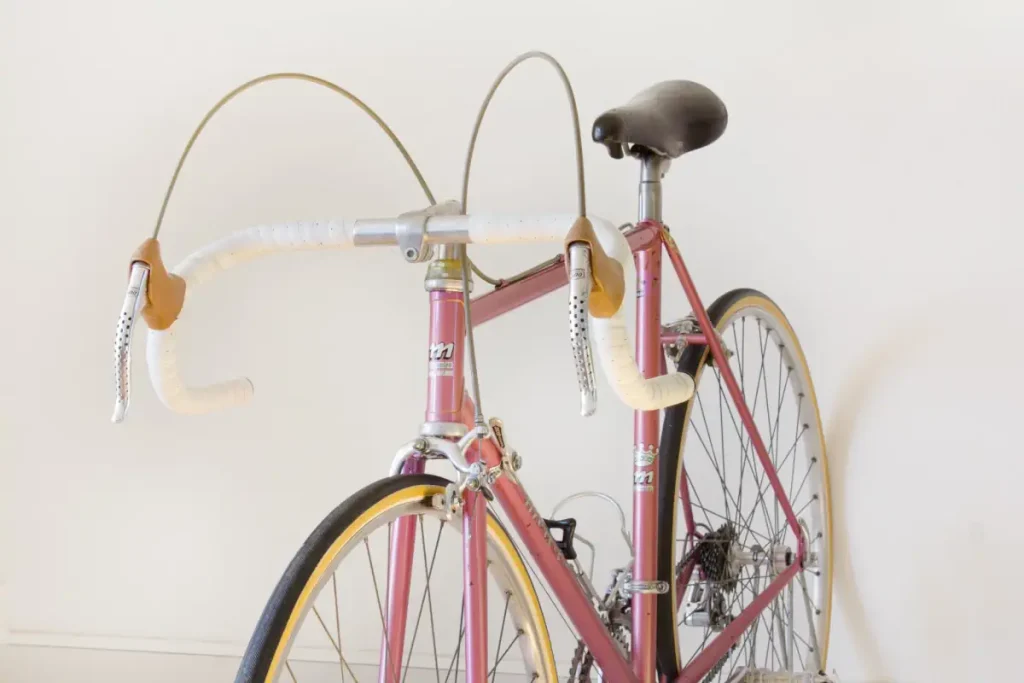
Cultural and Aesthetic Revival
There’s a cultural shift happening. People are looking for more meaningful, personal experiences. Vintage bikes aren’t just transportation – they’re self-expression. They say something about who you are.
And let’s be honest – they look amazing. The lines, the colors, the materials… there’s a timeless elegance to them. Whether parked outside a café or cruising through a park, they turn heads and spark conversations.
Europe: A Cultural and Community-Driven Revival
Strong Event Culture
Europe has a vibrant calendar of vintage cycling events, such as L’Eroica in Italy, Anjou Vélo Vintage in France, and Tweed Run in the UK. These events celebrate not just the bikes, but the entire vintage lifestyle – complete with period clothing, music, and community rides. This creates a strong cultural identity around vintage cycling.

Urban Infrastructure Supports Vintage Use
Many European cities are embracing the “15-minute city” model, with bike-friendly infrastructure that makes vintage bikes practical for daily commuting. Cities like Paris, Amsterdam, and Copenhagen are ideal for lightweight, low-maintenance vintage bikes.
Sustainability and Heritage
Europeans often view vintage bikes as part of a broader sustainability ethos and cultural heritage. There’s a strong appreciation for craftsmanship and repairability, and many riders take pride in restoring bikes themselves.
USA: Niche Enthusiasm and Collector Focus
More Collector-Oriented
In the U.S., vintage cycling tends to be more niche and collector-driven. While there are enthusiasts and restoration communities, the culture is less mainstream compared to Europe. Shows and swap meets exist, but they’re more hobbyist-focused than lifestyle events.
Urban Sprawl Limits Practical Use
Many American cities are still car-centric, with less infrastructure for everyday cycling. This makes vintage bikes more of a weekend or recreational choice rather than a daily commuter option.
Growing Interest Among Younger Riders
That said, there’s a growing Gen Z and millennial interest in vintage bikes, especially in cities like Portland, Austin, and San Francisco. These areas are seeing a rise in bike co-ops, DIY repair shops, and vintage bike cafes that echo European trends.
Shared Trends
Sustainability is a unifying theme in both regions, with vintage bikes seen as eco-friendly alternatives to modern, tech-heavy models.
Aesthetic appeal and individuality are driving interest globally, especially among younger generations.
Investment Potential
Here’s the kicker: with prices currently low, vintage bikes might be a smart buy. As interest grows – fueled by sustainability, style, and Gen Z’s influence – the value of well-kept or lovingly restored bikes could climb. It’s not just a ride; it could be a future classic.
Collectors are already beginning to recognize the potential. Rare models, especially those from iconic brands or with historical significance, are gaining attention. What’s undervalued today could become tomorrow’s prized possession.
The Future of Vintage Steel: What’s Next?
Looking ahead, several exciting trends are shaping the future of vintage steel bicycles:
Neo-Retro Steel Bikes
Modern brands are blending that classic steel charm with today’s performance perks – think disc brakes, slick drivetrains, and updated geometry. Sounds great, right? Sure… until you see the price tag. These neo-retro builds often cost way more – sometimes several times more – than just picking up a solid vintage frame and modernizing it yourself. And honestly? That DIY route often feels more personal, more rewarding, and way easier on the wallet. And who wants disc brakes on a classic frame anyway?
Custom Frame building
There’s definitely a growing market for handmade steel frames – think bespoke geometry, artistic lugs, and paint jobs that look more like gallery pieces than bike finishes. It’s a beautiful nod to the golden age of cycling craftsmanship. But here’s the thing: the price tags can be eye-watering. And let’s not forget – most of those old-school steel bikes? They were handmade too. You’re not just paying for craftsmanship now; you’re paying for branding, exclusivity, and a bit of modern hype.
Classic Cycling Events
Events like L’Eroica are doing more than just celebrating old bikes – they’re reigniting a full-blown love affair with vintage cycling. These rides aren’t just about pedaling; they’re about stepping back into a time when bikes were built to last, and the ride was as much about the journey as the destination. Think pre-1980s steel frames, wool jerseys, leather shoes, and gravel roads that test both your legs and your spirit.
And it’s catching on. There’s a growing crowd of riders who are all-in on this nostalgic vibe. They’re hunting down original parts, restoring old frames, and swapping stories (and components) with fellow enthusiasts around the world. It’s not just a hobby – it’s a movement. One that values beauty, simplicity, and the kind of craftsmanship you don’t see much anymore.
What’s really cool is how this scene contrasts with today’s high-tech, hyper-optimized cycling culture. Instead of chasing watts and marginal gains, these riders are chasing meaning. They’re slowing down, soaking in the scenery, and reconnecting with the roots of the sport. And honestly? That slower, more soulful approach feels like a breath of fresh air.

Sustainability-Driven Demand
As more people wake up to the environmental impact of their choices, steel bikes are getting a second (or third) look – and for good reason. Unlike modern carbon or aluminum frames that can be tricky (or downright impossible) to repair, steel is tough, forgiving, and built to last. A well-made steel bike can outlive its components, its rider, and maybe even the shop it came from.
That kind of longevity? It’s sustainability in action. Less waste, fewer resources, and more time on the road instead of in a landfill. And let’s be honest – there’s something deeply satisfying about riding a bike that’s been around the block a few times and still has stories to tell.
People aren’t just drawn to the eco-friendliness, either. There’s the craftsmanship, the classic lines, the ability to repaint or reconfigure a frame to make it your own. It’s like the bike version of slow fashion – intentional, personal, and built to last.
And it’s not just about vintage anymore. There’s a growing market for new steel frames too, especially from boutique builders who care about things like ethical production and local sourcing. It’s all part of a bigger shift – away from disposable culture and toward things that are made with care, meant to last, and maybe even worth passing down.
Hot Sellers: Steel Icons from the 1980s and 1990s
Certain vintage steel bikes are especially poised to become hot sellers due to their heritage, craftsmanship, and ride quality:
Colnago Super / Mexico: Italian elegance, racing pedigree, and Columbus tubing
The Colnago Super, introduced in the late 1960s, set the standard for lightweight steel racing frames. Its successor, the Mexico, pushed boundaries further with thinner Columbus tubing and a more aggressive geometry. Both models were ridden by champions and are prized for their responsive handling and iconic cloverleaf cutouts.
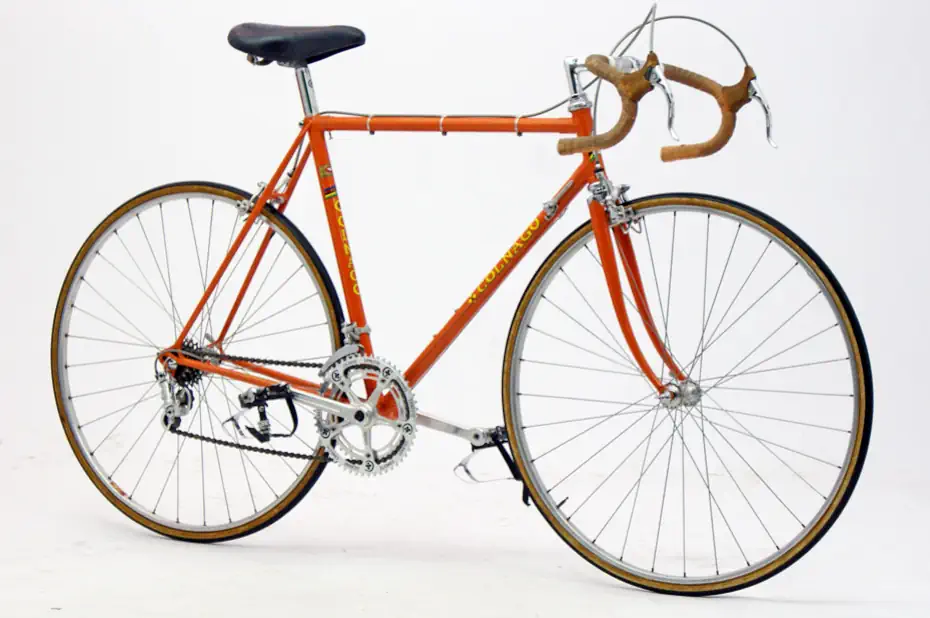
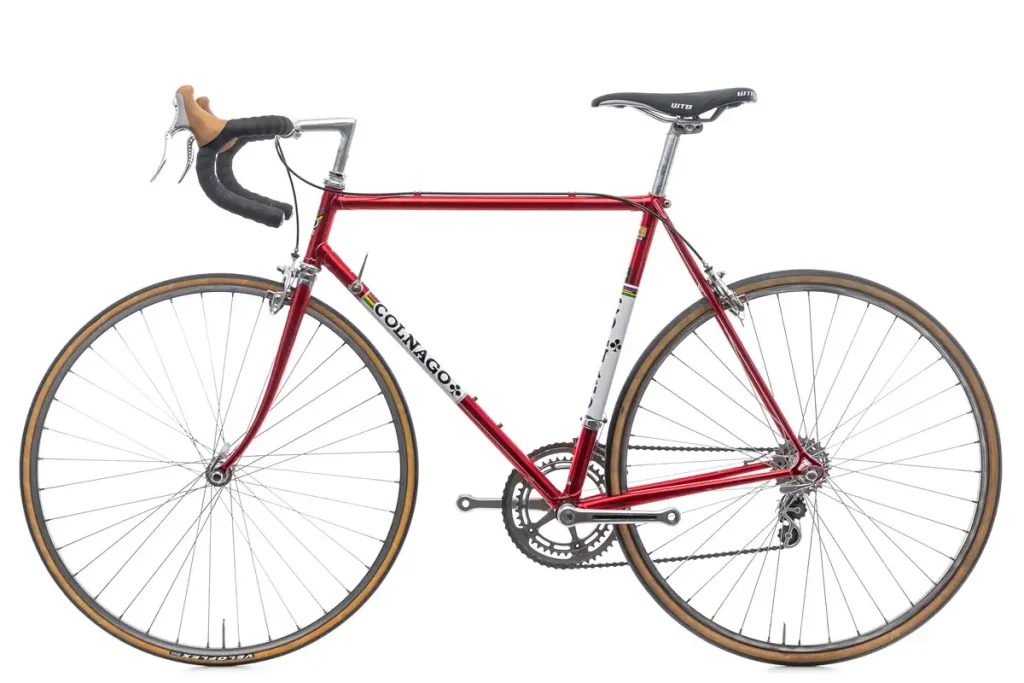
Bianchi Specialissima: Iconic Celeste paint, lightweight steel, and pro-level performance
A flagship model from the world’s oldest bicycle manufacturer, the Specialissima is synonymous with Italian racing heritage. Built with Columbus or Bianchi’s proprietary tubing, it combines featherweight construction with timeless aesthetics. Its Celeste color alone is enough to turn heads, but its ride quality seals the deal.

De Rosa Professional / Primato: Precision-built with beautiful lugwork and racing history
Ugo De Rosa’s frames are revered for their meticulous craftsmanship and smooth ride. The Professional was a staple in pro pelotons during the 1980s, while the Primato carried on the tradition with modern refinements. Known for their elegant lugs and balanced geometry, these bikes are as much art as they are machines.
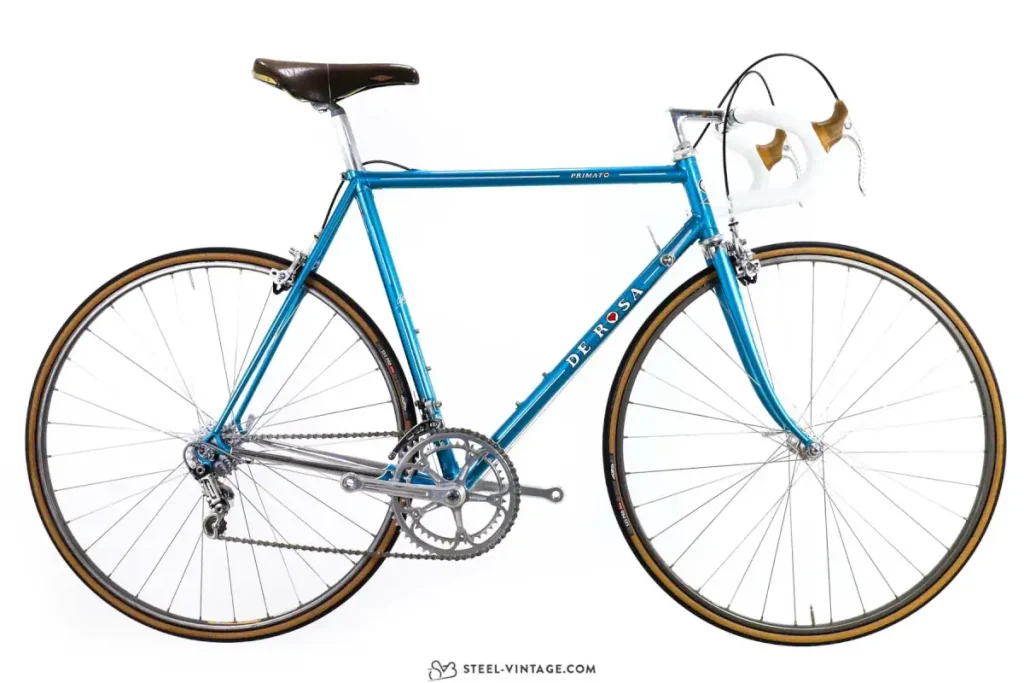
Eddy Merckx Corsa Extra: Belgian-built, SLX tubing, and team paint schemes
Named after the greatest cyclist of all time, the Corsa Extra was built for speed and durability. Constructed with Columbus SLX tubing and often adorned in iconic team liveries like Team Telekom or Panasonic, it’s a favorite among collectors and racers alike. Stiff, fast, and full of legacy.
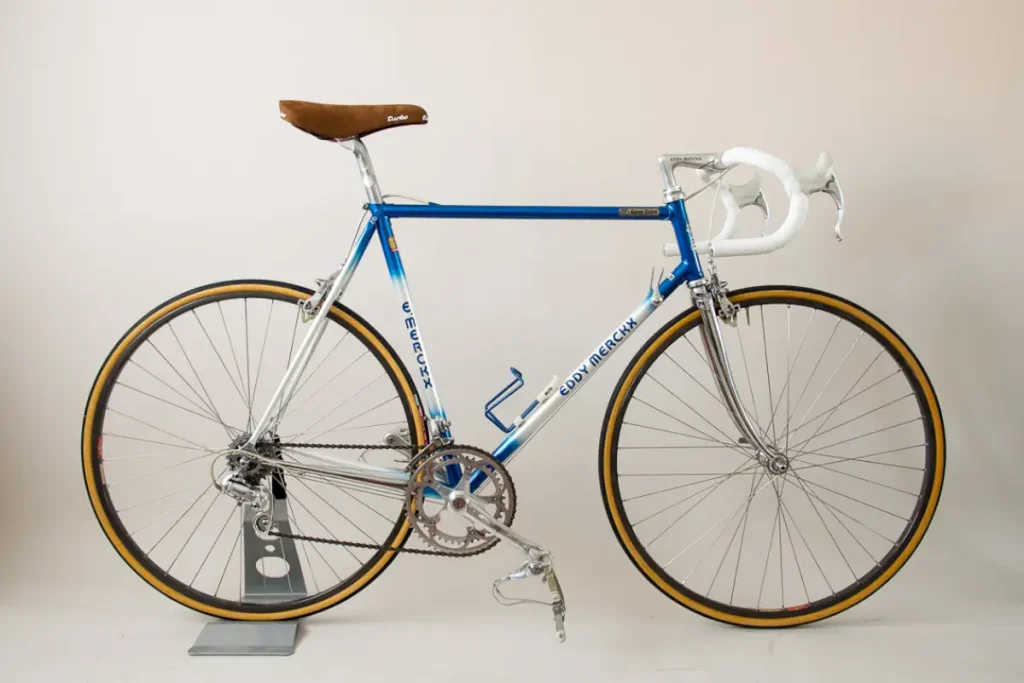
Cinelli Supercorsa: Timeless design, handmade quality, and collector appeal
One of the longest-running steel frame models still in production, the Supercorsa is a masterpiece of Italian framebuilding. With its signature fastback seat stays, chrome lugs, and impeccable finish, it’s a bike that blends tradition with performance. A true icon for purists.
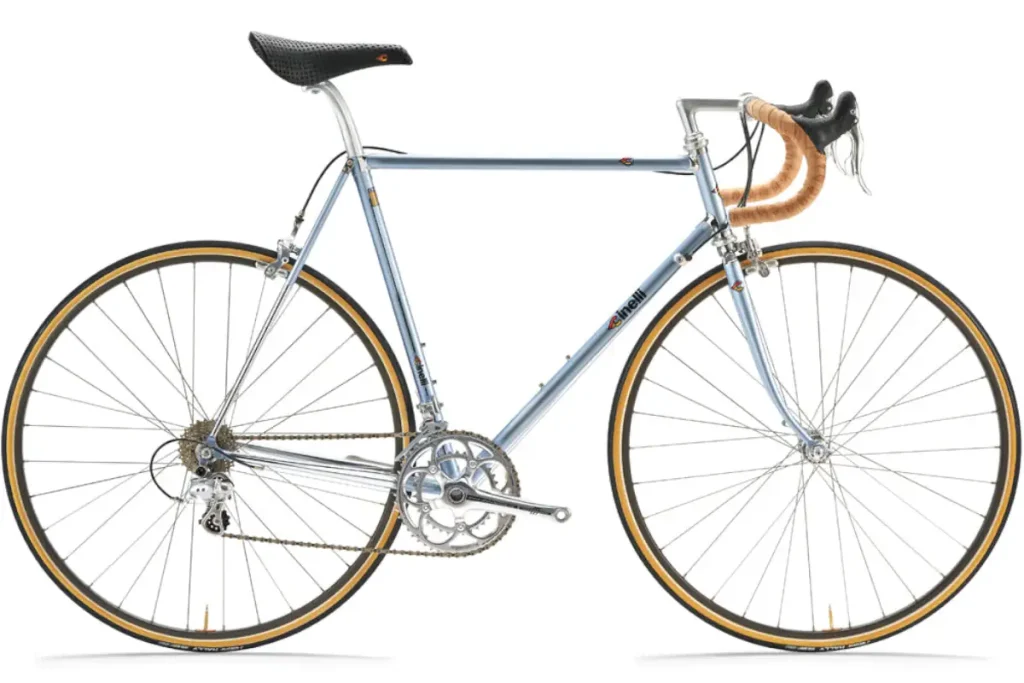
Pinarello Montello: Internal cable routing, aggressive geometry, and SLX tubing
The Montello was Pinarello’s top-tier race frame during the 1980s, known for its aerodynamic features and cutting-edge design. It featured internal cable routing and a sleek silhouette, making it a favorite among time trialists and road racers. Built with Columbus SLX, it’s both rare and revered.
Peugeot PX-10 / PY-10: French classics with Reynolds 531 tubing and understated charm
The PX-10 was France’s answer to the Italian racing machines – light, elegant, and widely raced. The PY-10 took things further with more refined construction and pro-level components. Both models are known for their clean lines, white paint schemes, and smooth ride quality.
Masi Gran Criterium: Cult favorite with Italian-American heritage and exquisite detailing
Originally crafted in Italy and later in California under Faliero Masi’s guidance, the Gran Criterium is a legend on both sides of the Atlantic. With its tight geometry, ornate lugs, and racing soul, it’s a bike that delivers both performance and panache. A true connoisseur’s choice.
These bikes are not only beautiful and functional – they’re also increasingly rare. As demand grows, their value is likely to rise, making them smart buys for both riders and collectors.
Hot Sellers: Japanese ‘Boom Era’ Bikes
Team-Miyata: Professional-level road racing
The Team model was Miyata’s flagship race bike, used by pro teams and built to exacting standards. It featured lightweight tubing, aggressive geometry, and top-tier components. Its clean lines and understated graphics make it a favorite among vintage purists.
Pro-Miyata: High-performance amateur racing
The Pro offered much of the Team’s performance at a more accessible price point. It was a popular choice for serious club racers and is now appreciated for its balance of performance, quality, and affordability.
Panasonic DX-5000: High-performance road racing
The DX-5000 was known for its excellent build quality and performance. It was a popular choice among serious racers and is now sought after for its durability and classic design.
Fuji Team: Professional-level road racing
The Fuji Team model was a top-tier race bike with a reputation for speed and reliability. Its high-quality tubing and components make it a prized possession among collectors.
Two Camps, One Frame: Period-Correct vs. Retro-Mod Builds
In the world of vintage cycling, a single steel frame can spark two totally different reactions. For some, it’s a relic – something to be lovingly restored, bolt by bolt, as a tribute to the golden age of craftsmanship. For others, it’s a blank canvas just begging for a modern twist. Same frame, wildly different visions.
On one side, you’ve got the purists. These folks are all about authenticity. Every lever, decal, and cable housing has to match the bike’s original era. For them, restoring a vintage ride is like preserving a piece of history. Their builds are time capsules – sometimes museum-worthy – and there’s a real satisfaction in honoring the past with that kind of precision.
Then there’s the retro-mod crowd. They love the soul of a vintage frame but aren’t afraid to throw on a modern drivetrain or even carbon wheels. It’s not about being historically accurate-it’s about making the bike ride like a dream today. For them, it’s part performance, part personal expression, and all about keeping those old frames alive and kicking.
And somewhere in the middle? There’s a growing group of riders who go for what you might call a “sympathetic restoration.” They’ll update the stuff that matters – like brakes, tires, or cables – but keep the vintage vibe intact. It’s a balancing act between rideability and respect for the bike’s roots.
At the end of the day, whether you’re a die-hard traditionalist or a modern-day tinkerer, it all comes down to one question: What does it really mean to honor a bike’s legacy?
What You Can Do Now: Keep the Wheels Turning
You don’t need a garage full of pristine steel frames or a shelf lined with Campy components to be part of this movement. If you’ve got a soft spot for vintage bikes – or even just a flicker of curiosity – that’s more than enough to get started. Pick up a frame that catches your eye, even if it’s a little beat up. Clean it, ride it. Join a local ride or show up at a vintage cycling event in your best wool jersey. Trust me, the community is half the fun.
And if you’re already deep in the game? Share what you know. Help someone with their first build. Trade parts. Post your projects, your rides, your stories. These bikes aren’t just machines – they’re rolling time capsules, and every time one hits the road again, it keeps the spirit alive.
You don’t have to be a master mechanic or a historian. Just be curious. Be generous. Be present. Whether you’re restoring a Peugeot from a yard sale or just admiring a Cinelli locked up outside a café, you’re part of something bigger. A movement that values craft over convenience, soul over speed, and stories over specs. So go ahead – turn a wrench, take a ride, and keep the wheels turning.
Conclusion: A Movement in the Making
Sure, e-bikes are still having their moment-but let’s not pretend they’re the end-all of cycling. Once the excitement wears off and you’ve wrestled with a few too many dead batteries or tried syncing yet another buggy app, reality sets in. And suddenly, that sleek, silent ride doesn’t feel quite so liberating.
Vintage bikes, with their blend of beauty, utility, and soul, are more than ready for their comeback ride. Who really takes pride in an electrified piece of plastic, churned out in some anonymous factory overseas, that looks like every other piece of mass consumed Amazon-sold, disposable e-bike on the market?
If you’ve been thinking about getting into vintage bikes, now’s the time. Seriously. Prices are about as low as they’re likely to go – we’re hovering near rock bottom. And if you’re on the selling side? Unless you absolutely have to, it might be smart to hold off. The tide will turn in the near future.
Honestly, the only thing really holding this back from breaking wide open is the economy. People are cautious right now – understandably so. But once things stabilize a bit, I wouldn’t be surprised to see demand (and prices) start climbing again. So yeah, if you’re a buyer, this might be your window.
This renaissance isn’t going to be driven by flashy marketing or the latest tech. It’s going to be powered by people – people who care about craftsmanship, who value sustainability over speed, and who love a good story more than a spec sheet. The future of cycling might just look a lot like its past – and honestly, that’s kind of exciting.
Oh, and hey – if you or someone you know happens to be sitting on an all-original 1984 Team-Miyata SL, the one with the Campy Super Record kit? Yeah… send them my way. I’m a buyer. (Just don’t tell everyone – I’m trying to keep the price reasonable!)
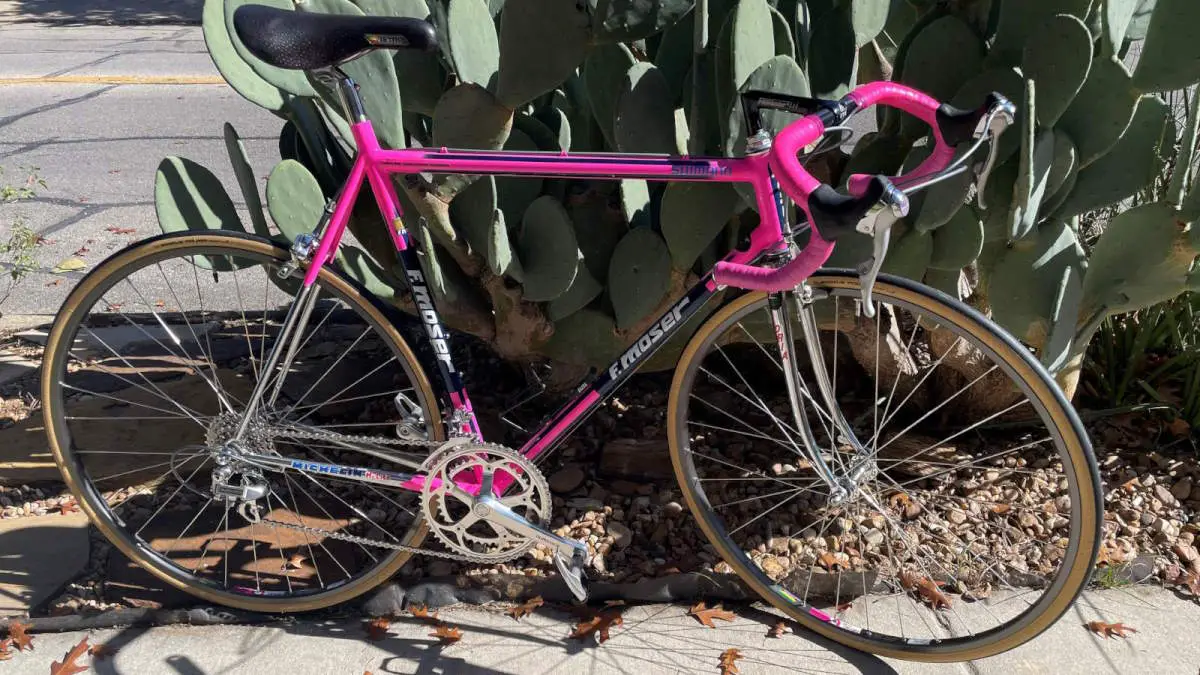
3 replies on “The Coming Renaissance of Vintage Bicycles: Why Simplicity Will Ride Again”
Hey, don’t forget me! I’m enjoying my latest bike … a 1971 Raleigh Sports 3 Speed that was on the side of the road on trash day headed for the heap. I wanted one back in the 70’s, and now I have it, and ride it often (5K miles over the last 2 years). Easy to repair and maintain, and a pleasure to ride. A few new parts (such as sprung Brooks B67 and decent Kool Stop brake pads). Lots of patina and a conversation starter.
That Raleigh sounds like a total classic—rescued from the curb and now clocking serious miles? That’s a great comeback story. I love that you finally got the bike you wanted back in the day, and it’s still giving you joy. The Brooks B67 and Kool Stops are solid choices, and I bet that patina gets people talking. Hope there are some classic bike events in your neck of the woods you can jump into. Ride it in good health!
Here’s the photo of the bike, in case you haven’t seen it:
https://photos.app.goo.gl/UjQg2SPXhgrZiE6j9